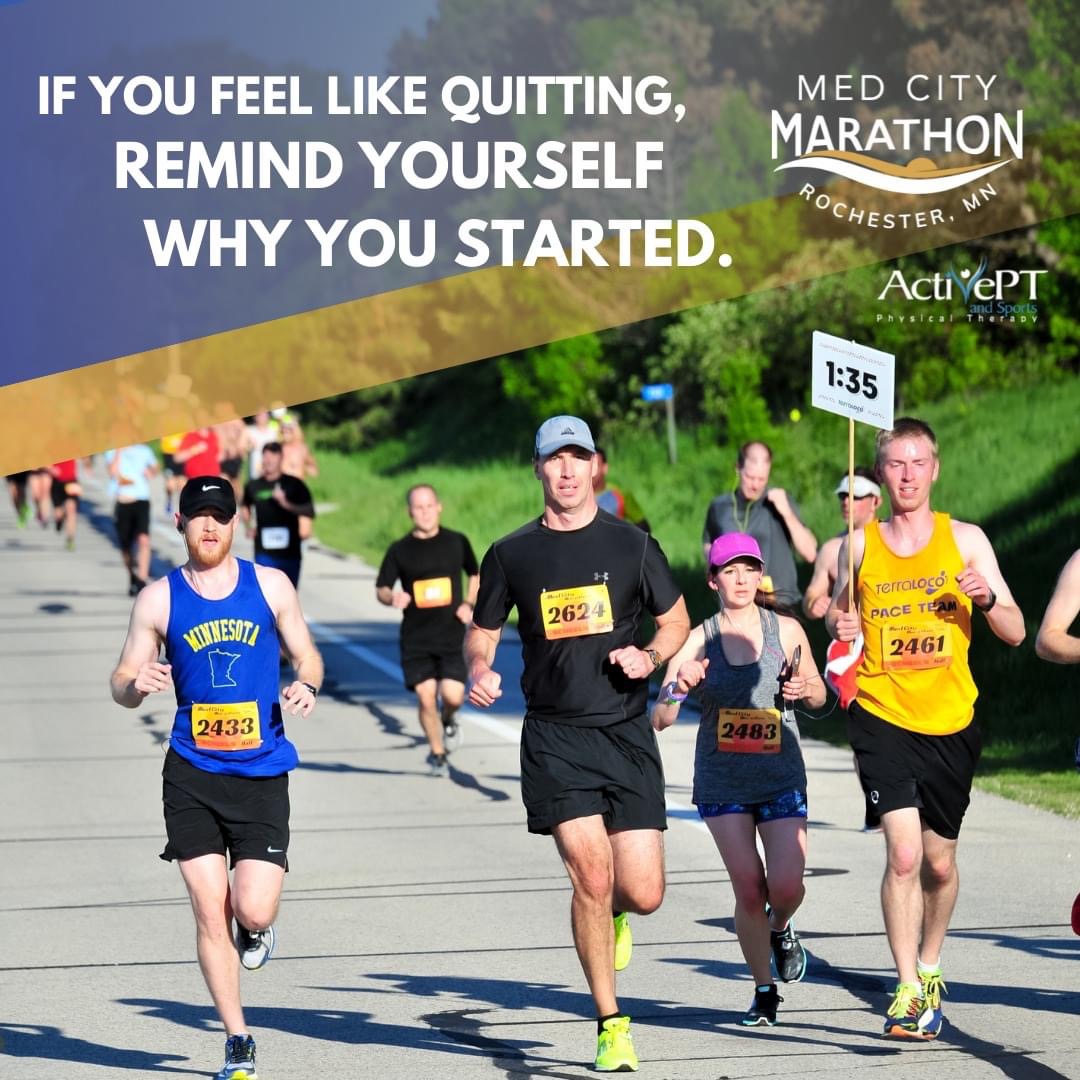
5 Rules for Beginning Runners
Recently I was asked to give a brief Running 101 talk to a group of gym-goers who were interested in doing their first 5K. The organizer told me that some of them were a little nervous about this endeavor. So I thought long and hard about what my best advice for beginning runners would be, boiled down to as few steps as possible. Ultimately, I narrowed it down to five key rules to follow in order to be successful as a new runner.

Rule #1: Set Reasonable and Achievable goals.
This is the first rule because it is probably the most important. Without this rule, you set yourself up for failure from the get-go.
It all starts with knowing your “why.”
Once you know your “why” it’s easier to make adjustments when things don’t go the way you intended.
Before you begin any fitness program, think about why you are doing this. Is your goal to lose weight? Is it to cross the finish line? Is it to set a good example for your kids? Each of these goals may have different obstacles and each requires setting different stepping stones to achieve them.
Let’s say, after much consideration, you realize that your ultimate goal is to set a good example for your kids. You know they are watching your every move and you know that lately, you haven’t been showing them what it means to have a healthy relationship with your body. So you set a goal of running a 5K. But what happens if you get injured or you are struggling to run the entire distance? Is crossing the finish line after all of your hard work, no matter how long it takes going to achieve your goal? Yes. Even if you don’t run the whole thing.
It’s also important to think not only about what is achievable, but about the obstacles that might get in your way. For example, I now know that I won’t keep up with training unless I have a race on the calendar. And not just any race. It has to be longer than a 5K or else I will make up excuses to not do my training. But not as long as a half marathon, because I’ve done that several times and I know I don’t have the time to commit to that training right now. So the sweet spot for me is a 10K distance.

Rule #2: Don’t do too much, too fast
Probably the biggest mistake new runners make is doing too much too fast. They get in their heads about what a “real” runner looks like, how fast a “real” runner is, or how long they have to go in order for it to be considered a “run.”
I still remember the summer I first started running. I was only a couple of weeks into my training plan and I went for a run on the treadmill at the gym. The woman next to me was going faster, so I picked up my speed. She started going even faster, so I picked up my speed again. Before I knew it, she was wiping up her equipment without having even broken a sweat and I was hanging on for dear life for fear of falling off the treadmill.
This, my friends, is a recipe for disaster. Luckily, I didn’t hurt myself that day, but I’ve seen many runners injure themselves within the first few weeks because they did too much, too fast.
Don’t make this mistake!
Many runners do this because they are comparing themselves to others – or perhaps to what they used to be able to do. Comparison is the thief of joy. This applies to running too.
One thing I cannot emphasize enough is that it is okay to walk!
Plenty of runners use the run-walk method for their entire careers and they are very successful doing as little as 30 seconds of running followed by a walk break.
During my first race (the aforementioned triathlon), I learned this lesson.
I came out of the bike portion in okay shape and began the 4 mile run. I started out too fast and was gassed by the time I reached the turn around. In an attempt to pick up the pace, I tried to keep up with a lady in front of me. She was doing the run-walk method. And no matter how hard I tried, I kept falling further and further behind even though I was running at a regular pace and she was taking walk breaks.
This method doesn’t work for everyone, so test it out and see if it works for you. It’s a great way to progress for people with little to no cardio experience. Week 1 run for 15 seconds and walk for 2 minutes for 20 minutes; Week 2 run for 30 seconds and walk for 2 minutes; Week 3 run for 30 seconds and walk for 1 minute; etc. Once you find a walk-run ratio that is most comfortable, you can increase your overall duration in order to complete all sorts of distances!

Rule #3: Don’t Neglect Your Gear!
Running in the wrong gear is just as likely to injure you as doing too much too fast.
That’s where a store like ours comes in. Our staff will evaluate your gait, look at your wear pattern on your current shoes, and look at your foot and arch shape to match your unique foot & biomechanics to the right shoe.
That being said, the right gear can also make a huge difference psychologically.
When I first started running, I went to a run specialty store and had my gait analyzed. I purchased two pairs of shoes, socks, and a running outfit on that first trip. I wanted to be prepared and I didn’t want any excuses for skipping a workout. But the fact of the matter was that I just spent a boatload of money on all of that gear, so I was not going to let it collect dust. Not only would I feel guilty, but I could already hear my husband’s voice in my head asking why I spent all of that money if I was just going to leave it in the closet.
Additionally, the shoes were nice and comfortable, the shorts wore like a dream, and I felt kinda cute getting ready to go for a run. The nice gear motivated me in more ways than one to get my workouts done as scheduled!
P.S. There is a solution for everything! Don’t let a solvable inconvenience become an excuse not to run. For example, if you don’t feel comfortable leaving the house without your phone but none of your shorts have a pocket big enough… guess what? There are shorts with pockets designed for XL phones or you can pick up a gear belt to bring along everything you need.

Rule #4: Always Listen to Your Body
Your body will usually tell you when you’re doing too much, too fast. So listen to it!
Take a walk break, go slower, or take a rest day even when you’re scheduled to run if you need the rest. The better you take care of your body and listen to what it needs, the more likely you are to be successful.
Take the time to experiment by running at different times of day, at different paces, on other surfaces, or in new locations. Find something that works for you and stick with it!
Keep in mind that what works for one will not always work for all.
This is particularly true when it comes to footwear, but also for everything else in the running world. A lot of people like to get their running out of the way in the morning, but I personally like to run in the afternoon. Everybody’s body clock, tolerance for pain, foot shape, cardiovascular health and so on is different, so you’ve got to listen to your own body, not what other people are telling you!

Rule #5: Don’t Neglect Your Overall Health
When you start running, each workout is only a small part of your day and an even smaller part of your week. Don’t forget about treating your body right the other 24/7. What you do four hours before you go for a run (or even 24 hours!) will affect how your body feels before, during, and after.
For example, if you are properly hydrated throughout the day, most people will not need to bring water with them for anything shorter than an hour. How you fuel your body will make a difference to your overall energy level, as well as how quickly you will need to replenish your stores while on a run. Food converts into energy fuel for your body, as well as helping to repair your muscles and can make recovery easier.
Cross-training can also be an important component to staying healthy as a runner. I highly suggest finding a cross-training activity you enjoy now, because almost all runners will deal with some kind of injury at some point in their careers, and having something you enjoy doing will not only help you avoid burnout now, it can help you stay fit down the road. Cross-training also helps activate and strengthen different parts of your body which can help with injury prevention and maintaining form.
And finally, don’t ignore feelings that something might be wrong. Remember: listen to your body! Your overall health is more important than crossing a finish line.
Recently, I learned this lesson when I spent two years struggling to get back into running shape. I figured it was the stress of running a business during a pandemic, but a full blood panel revealed that my ferritin was extremely low and my hemoglobin was approaching anemia. My fatigue, lethargy, breathlessness and more suddenly made a lot of sense. Once I started taking a few supplements, my energy levels increased dramatically and I found I was finally motivated again to go for a run.
Now I’m registered for a 10K in Las Vegas in a couple of weeks and also joined a relay team for the Med City Marathon in May. I haven’t quite gotten back into a regular training pattern yet, but I’m making progress by taking my own advice: setting good goals, listening to my body, going slow, updating my gear, and taking care of my overall health.





